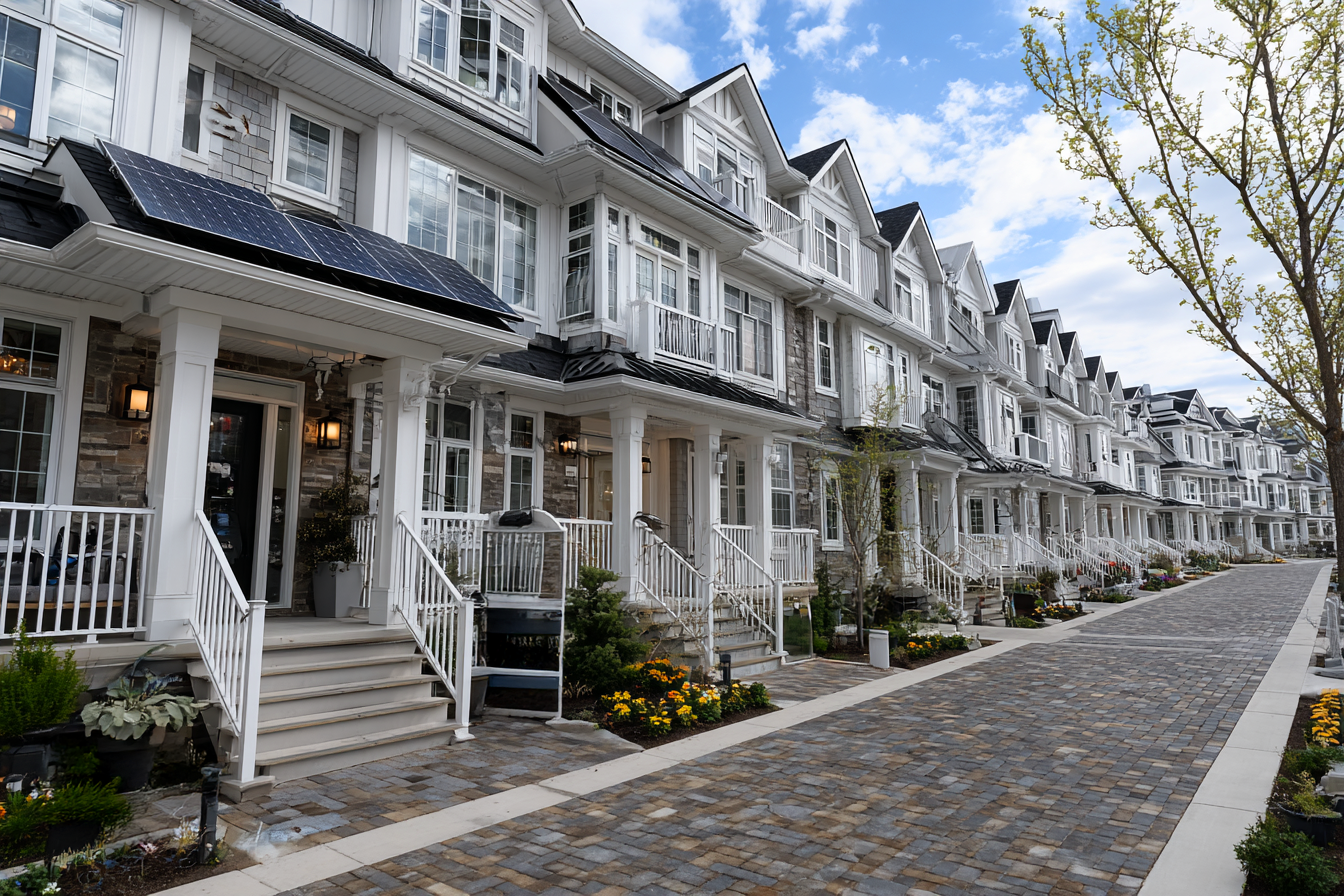Top 5 Clean Energy Pilot Projects Transforming Canada

Written by Solenery
2 min read
Introduction
Across Canada, clean energy isn’t just a promise—it’s already happening.
From solar-heated neighbourhoods in Alberta to cutting-edge smart grids in Ontario, pilot projects are laying the groundwork for a net-zero future.
These real-world demonstrations are testing what works, what scales, and what policies can help bring clean energy to every Canadian community.
In this post, we highlight five of the most impactful pilot projects that are transforming how we heat, cool, and power homes and cities across the country.
If you’re looking for proof that Canada is innovating at the grassroots level—this is it.
Drake Landing Solar Community (Okotoks, Alberta)
What Makes It Special:
Over 90% of annual space heating comes from the sun.
Uses seasonal thermal energy storage (STES): solar-heated glycol is stored underground during summer for winter use.
Serves 52 homes connected to a centralized solar-thermal system.
Project Highlights:
Achieves net-zero space heating.
Backed by NRCan and Alberta’s Ministry of Environment.
Homes remain connected to the grid but rarely use backup heat.
Why It Matters:
It’s a world-leading example of a solar district heating system—and a model for new subdivisions in Canada’s sunniest provinces.
Manitoba Hydro Place (Winnipeg, Manitoba)
What Makes It Special:
LEED Platinum-certified 22-storey office tower.
Features geothermal boreholes, solar chimneys, double façade glass, and automated blinds.
Designed to reduce energy use by 70% compared to conventional towers.
Project Highlights:
Internal atrium acts as a thermal buffer.
Uses passive design + minimal mechanical cooling.
Houses 1,200 employees year-round in comfort—even in −35 °C winters.
Why It Matters:
It proves that deep energy retrofits and green design can work even in Canada’s coldest cities—without compromising functionality or comfort.
Alectra Utilities’ POWER.HOUSE (Ontario)
What Makes It Special:
A virtual power plant (VPP) composed of 20 homes with solar panels, batteries, and smart inverters.
Systems are remotely controlled and dispatched based on grid needs.
Project Highlights:
Supports Ontario’s grid during peak demand.
Demonstrates how homes can act like miniature power plants.
Participants earned energy credits without sacrificing comfort.
Why It Matters:
It showcases how distributed energy resources can come together to build a smarter, more flexible energy grid—without new power plants.
UBC Bioenergy Research and Demonstration Facility (Vancouver, BC)
What Makes It Special:
Combines building-integrated PV (BIPV), wood-waste biomass, and smart control systems.
Powers and heats academic buildings and residences.
Project Highlights:
Cuts UBC’s GHG emissions by 9%.
Energy used on site, maximizing efficiency.
Integrates with teaching and research labs.
Why It Matters:
It’s a model for district-scale carbon-neutral energy and shows how public institutions can lead in sustainable innovation.
Enwave Deep Lake Cooling (Toronto, Ontario)
What Makes It Special:
Uses 4 °C water from 83 m below Lake Ontario to cool over 100 buildings.
Saves 75–90% electricity compared to conventional air conditioning.
Project Highlights:
Connected to universities, hospitals, and commercial towers.
Eliminates the need for rooftop chillers and harmful refrigerants.
Integrates with Toronto’s drinking water infrastructure.
Why It Matters:
It’s a Canadian-first in sustainable urban cooling—and it’s scalable in other cities with large water bodies or cold seasonal storage options.
Conclusion
These five clean energy projects are more than case studies—they’re blueprints for the future of Canadian living.
From suburban solar communities to smart downtown cooling, they show that net-zero isn’t a dream—it’s already in motion.